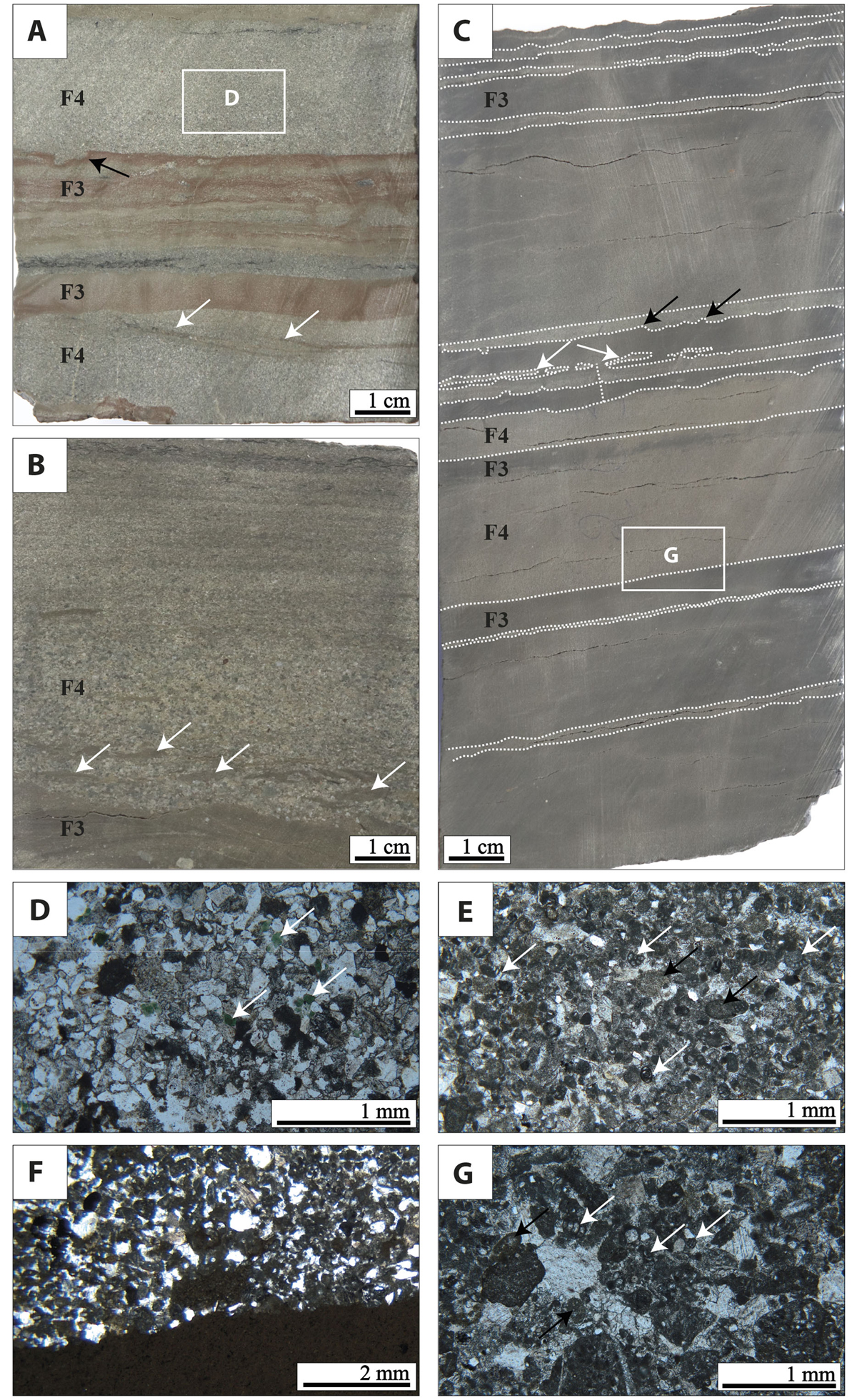Fig. 6

Download original image
Glauconite-rich sandstones and fine calcarenites (F4 facies). (A) Core photograph of glauconite-rich sandstone (F4 facies) alternating with marlstone/siltstone similar to those described previously (F3) in the form of planar parallel laminations similar to the upper parallel laminations of the Td member of the Bouma sequence (Bouma, 1962). The white arrows indicate current ripples within the sandstones similar to those from the Tc layer of the Bouma sequence, and the black arrows indicate a flute cast. As an indication, the direction of the current would be from the left to the right of the picture. Darker areas in the core sample indicate the accumulation of leaves. (B) Hand sample of fine to medium sandstone (F4 facies) displaying parallel lamination (lower parallel laminations of the Tb level of a Bouma sequence) with an erosive base and grain size cut-off with the underlying marlstone layer (F3 facies). The white arrows in F4 facies indicate rip-up clasts ripped from the F3 facies marls. (C) Core photograph displays alternation of the glauconite-rich sandstones (F4) and marls/siltstones (F3). Load structures are indicated by the arrows: white arrows indicate pendulous load cast while black arrows indicate flame structures. (D) Close-up view of the F4 sandstones from (A) showing the dominance of well sorted fine quartz and the abundance of glauconite mineral indicated by the white arrows (PPL microphotograph). (E) Thin section of the fine calcarenites (F4 facies) displaying the mixture of miscellaneous grains with the noticeable abundance of reworked Mesozoic foraminifera (white arrows) and the presence of lacustrine ooids/peloids (black arrows). (F) Thin section under PPL exhibiting a grain size cut-off between the calcarenite (F4 facies) and the underlying marlstone (F3 facies). (G) Thin section under PPL of a medium-sized calcarenite (F4 facies) displaying dominant carbonate extraclasts, some of which containing foraminifera (white arrows), the black arrow indicates a lacustrine ooid/peloid.
Les statistiques affichées correspondent au cumul d'une part des vues des résumés de l'article et d'autre part des vues et téléchargements de l'article plein-texte (PDF, Full-HTML, ePub... selon les formats disponibles) sur la platefome Vision4Press.
Les statistiques sont disponibles avec un délai de 48 à 96 heures et sont mises à jour quotidiennement en semaine.
Le chargement des statistiques peut être long.




